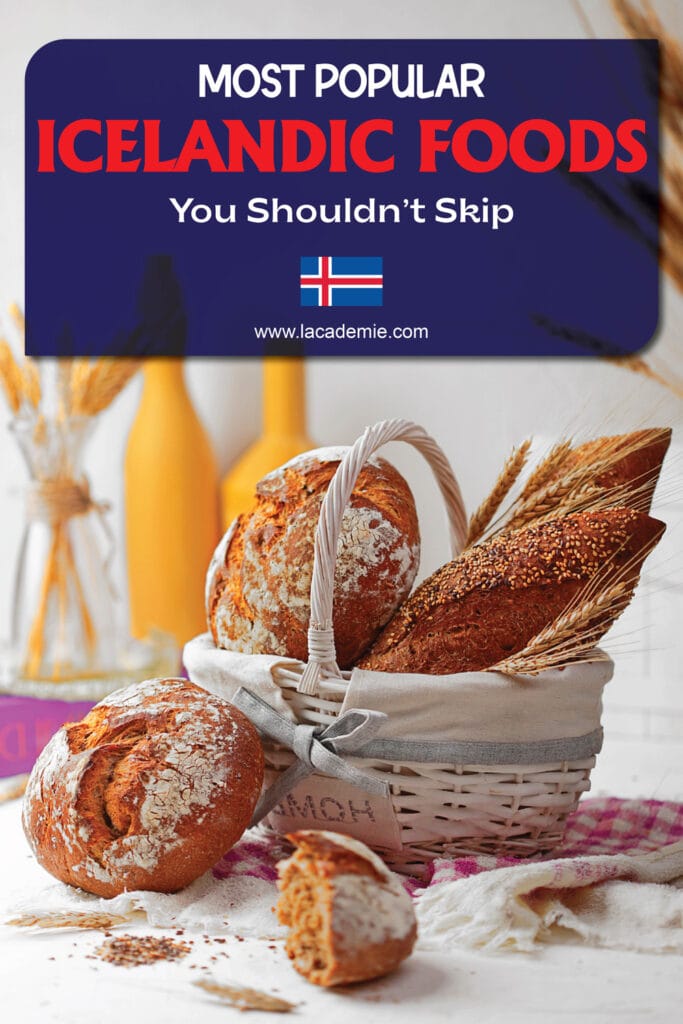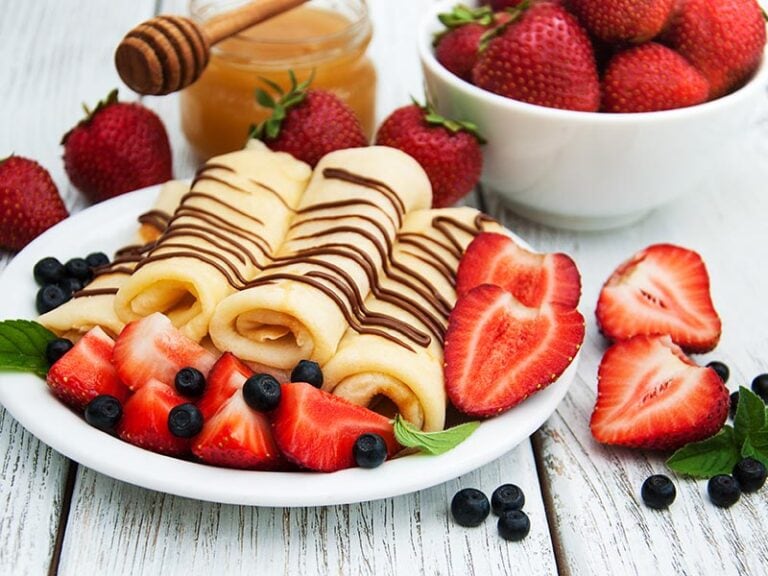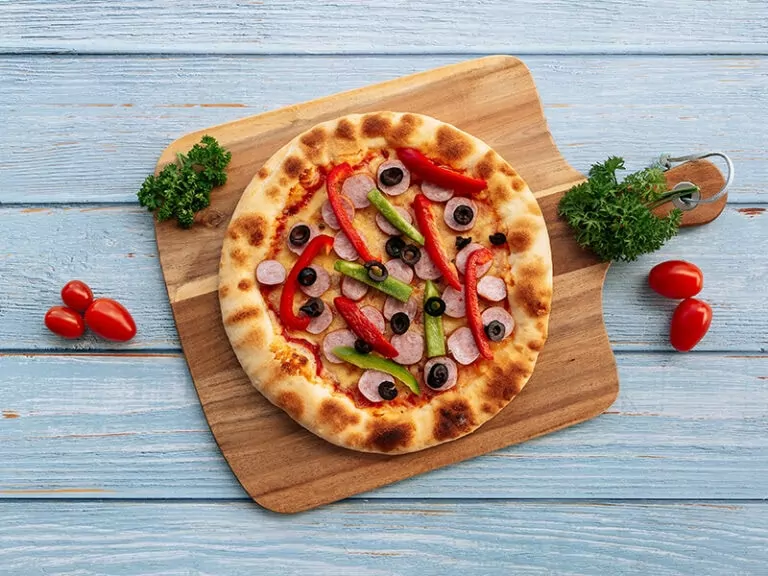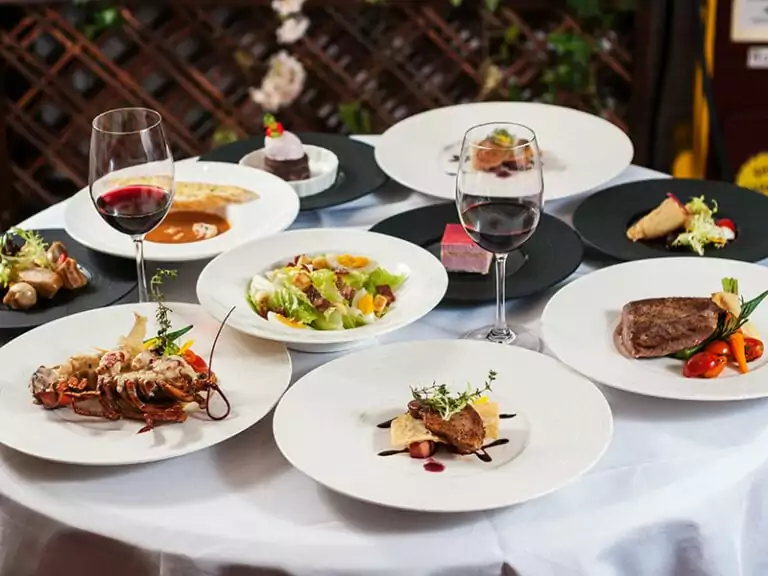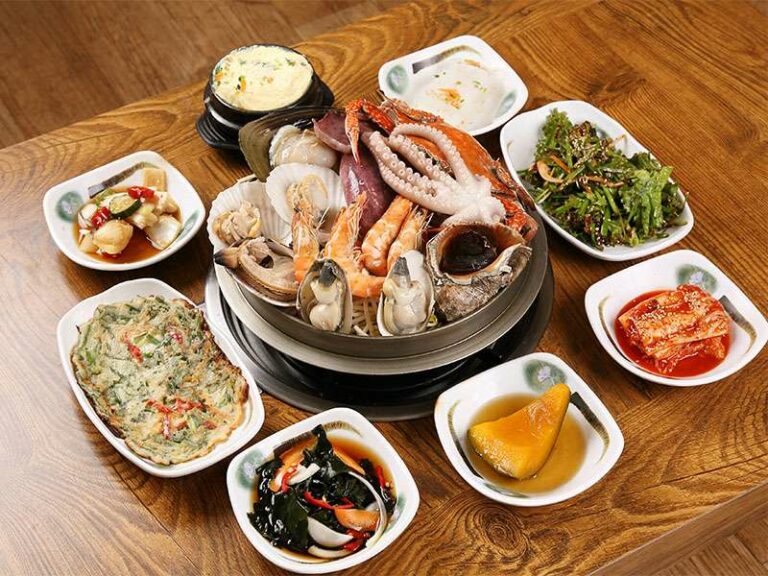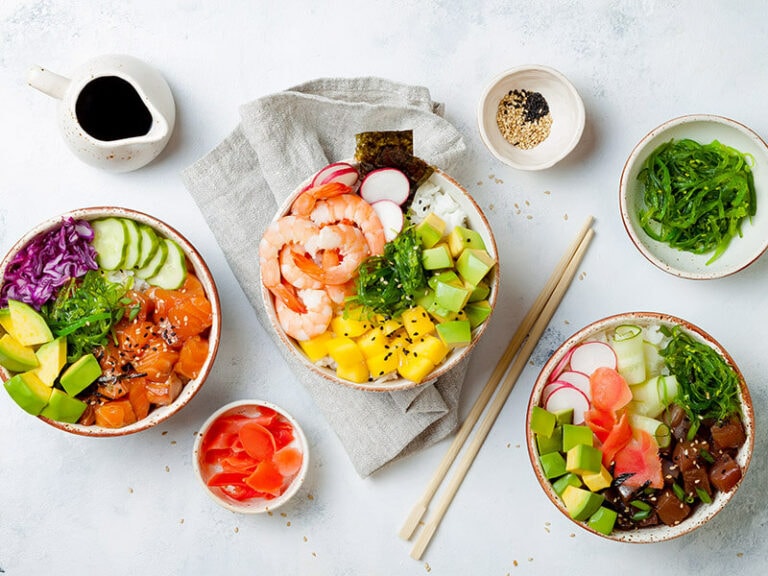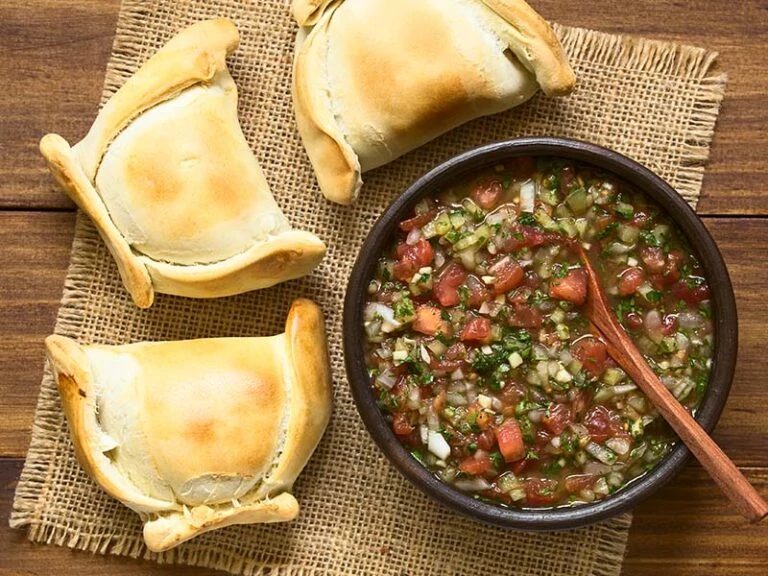In the midst of the North Atlantic, Iceland stands as a beacon of natural beauty and culinary intrigue. Its dishes, a testament to the resilience and creativity of the Icelandic people, harness the bounty of both land and sea.

From age-old recipes passed down through generations to modern twists on classic flavors, here’s a delectable dive into 24 of Iceland’s most cherished foods.
1. Rúgbrauð/Rugbraud – Rye Bread
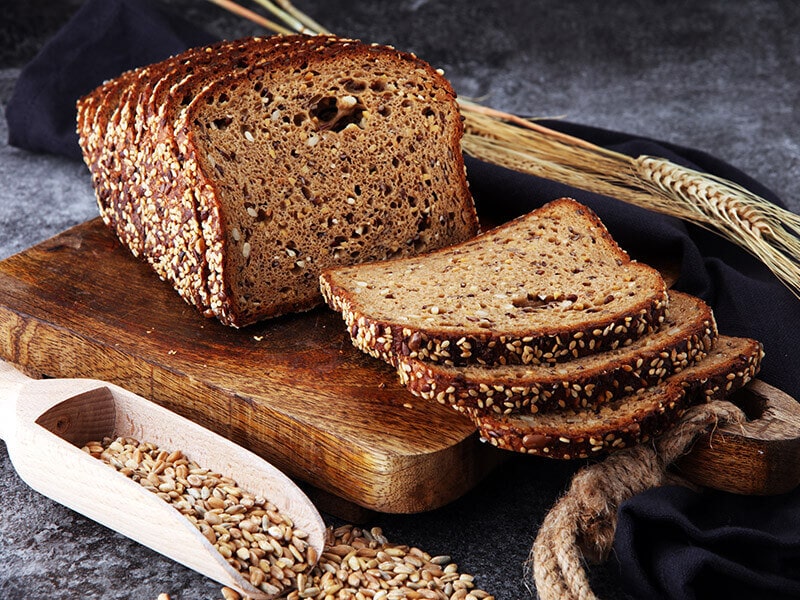
The Icelandic settlers have two methods of making Rugbraud: overnight baking in a pot placed above the dying embers or burying it next to a hot spring and steaming – which claimed the name Hverabraud – hot spring bread.
Whether the making method is, this bread tends to have a thick texture, with no crust and a slightly sweet taste. Nowadays, it’s commonly served with butter or an Icelandic type of smoked lamp called ‘hangikjot’.
However, many unique sweet treats in Iceland also reuse the stale Rugbraud to form a porridge called ‘Braudsupa’ – bread soup. In the process, slices of Rugbraud will be soaked first, then brought to a simmer along with raisins, adding some flavorings, then served hot.
2. Flatkaka/Flatbrauð – Flatbread
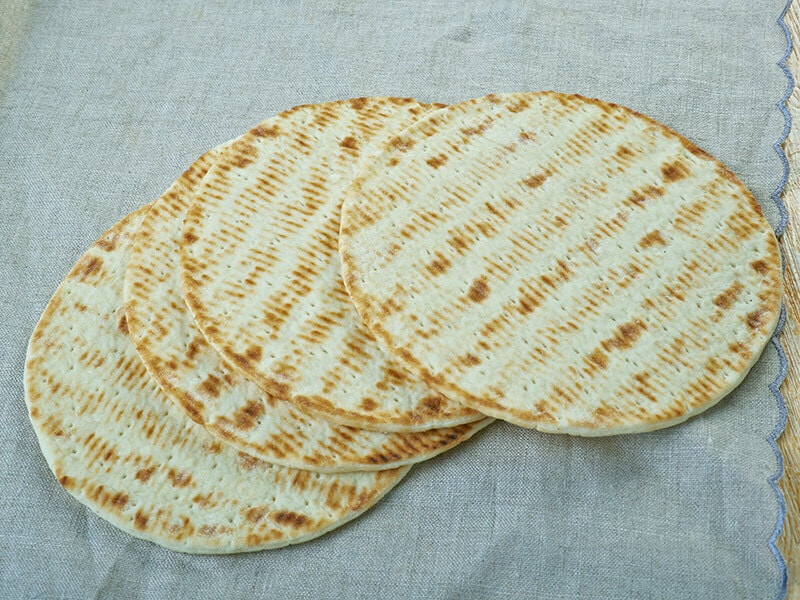
Flatkaka is a rye pan-fried flatbread, which usually comes with line patterns of the iron cast roasting pan. It was believed to have first appeared in the ninth century and was baked on hot stones or direct ember heat.
The signatures of Flakaka include a thin round shape, soft texture, and made without yeast. Nowadays, this delicious flatbread is made by frying in a cast iron pan and is also usually served in a quarter or half with mutton pate or smoked salmon.
3. Laufabraud/Laufabrauð – Leaf Bread/Snowflake Bread
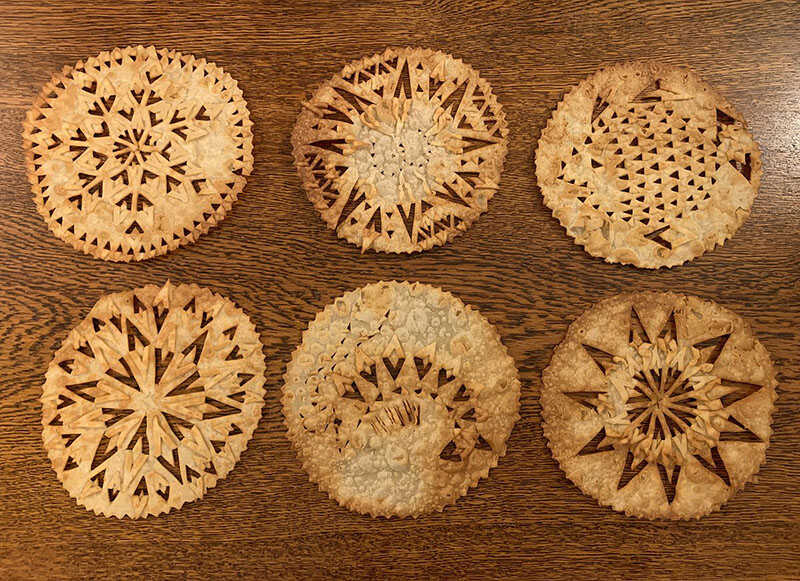
Laufabraud is a must-have dish for Icelandic dinner on Christmas. It is another Icelandic cultural flatbread. Several days before Christmas, family members will gather to make this beautiful bread.
Making Laufabraud is pretty simple since the Icelander will only fry them real quick. However, the leaf-like geometric pattern is what makes it so complicated as well as enjoyable to do.
The Icelander even invented specific utensils to create multiple patterns on leaf bread. Some of this bread has a snowflake pattern; that’s why it’s also known as snowflake bread in many other regions, including the U.S.
4. Snudur – Cinnamon Rolls
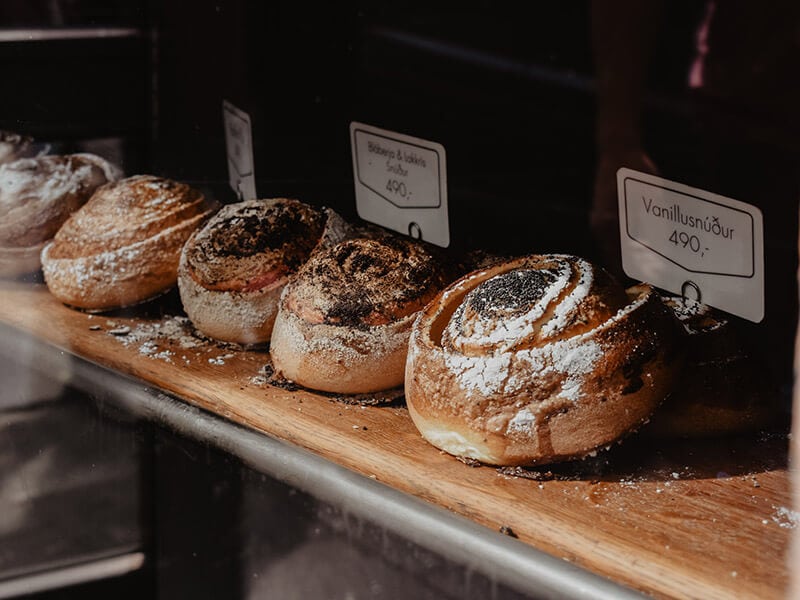
Cinnamon is an excellent ingredient for cold weather. Snudur is a soft rolled bread filled with cinnamon and glazed with chocolate, vanilla, caramel, or sometimes just sprinkled with sugar.
Snudur has become a common bread that you can find in almost any bakery store in Iceland nowadays. However, its origin is still not yet confirmed today.
Unlike other Icelandic bread usually used in a meal or feast, Snudur is more well-known as a treat for teenagers thanks to its sweetness and a warm touch of cinnamon to fight the cold.
5. Kleinur – Doughnuts
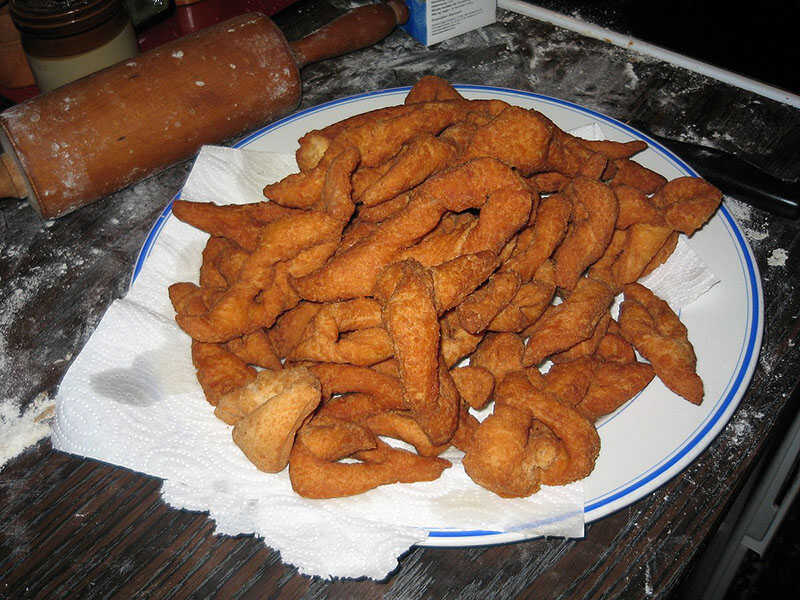
Another type you can easily find in Iceland bakery stores is Kleinur – a twisted doughnut sometimes called the Angel Wings. Like Snudur, it was also a familiar dish in Denmark before it appeared in Icelandic cookbooks in the late 18th century.
Locals often knead cardamom or nutmeg with the dough to add a warm flavor, making Kleinur a Christmas treat. However, now you can eat it as daily food. You’ll need nothing more than a Kleinur with a cup of hot coffee for a perfect Icelandic breakfast.
6. Pylsa – Hot Dog
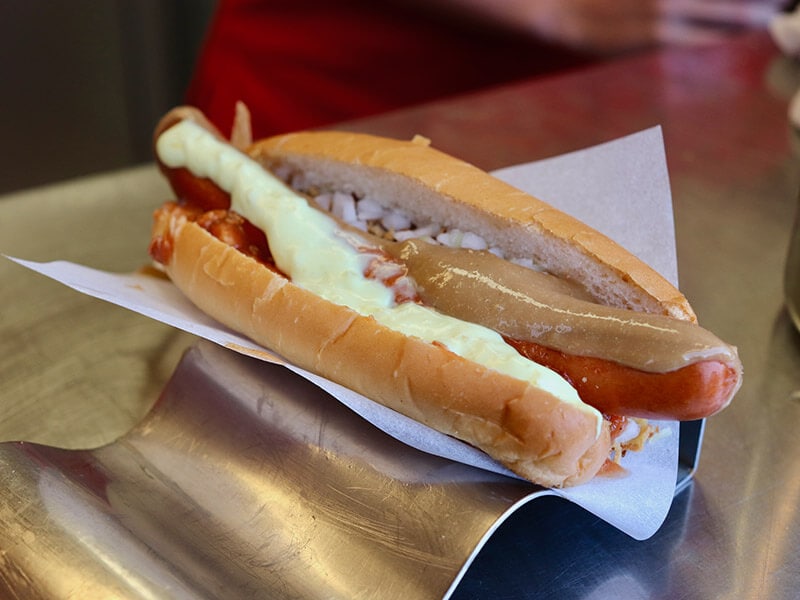
Have you ever wondered, among numerous hot dog varieties, what is the best one? Pylsa can be the answer! It is a sandwich influenced by the Danish during the 19th century. Denmark people also call it “Pylsa”.
However, it’s the Icelandic hot dog and sauce that make its fame. Traditionally, the hot dog contains equal parts of pork and beef or lamb. Pylsa comes with multiple sauces, but Icelandic sweet mustard sauce is a major choice.
You’d better order an “Ein Med Ollu” Pylsa to get all the ingredients, including raw onion, crunchy deep-fried onion, Icelandic mustard, and remoulade sauce.
7. Kjotsupa – Lamb Soup
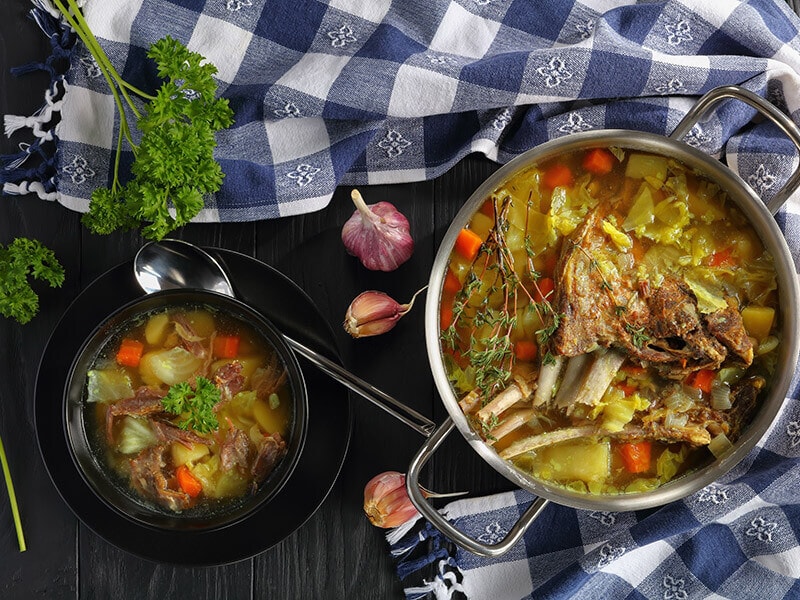
During the cold months, Kjotsupa is always a favorite lunch choice in Icelandic families. You can consider it a meat soup with lamb, carrots, potatoes, and Icelandic herbs.
Kjotsupa has been a traditional Icelandic soup since the settlement around 11 centuries ago. Therefore, don’t miss this soup if you want to know Iceland’s “true” cuisine.
8. Hangikjot – Smoked Lamb
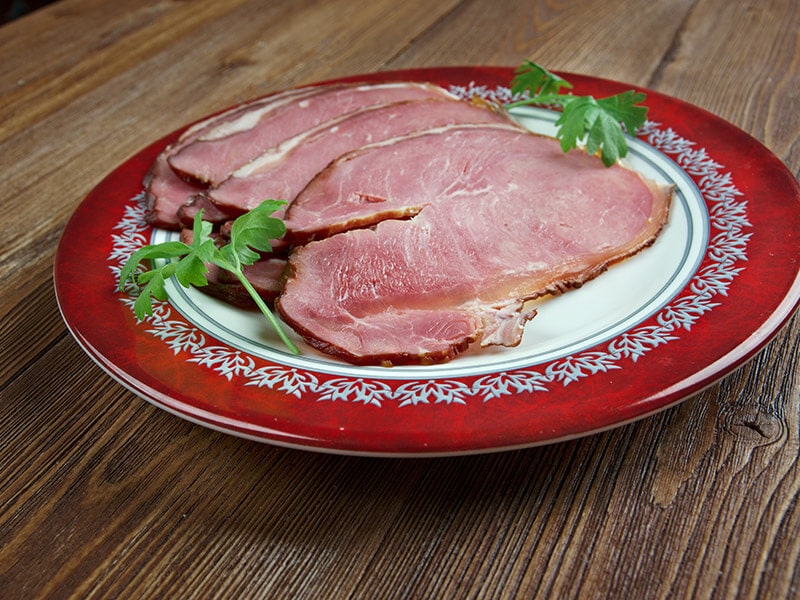
The word “hang” in the name means hanging lamb on the smoking birch wood. However, this dish uses another smoking method: a mixture of dried sheep dung and hay, called “Tadreykt”.
Hangikjot is not only famous for its spectacular flavor but also helped the Icelanders through the Little Ice Age since smoked meats can survive for a long time. Nowadays, it often appears in lunch meals, with Flatkaka and Icelandic sauces.
9. Svid/Svið – Sheep Head
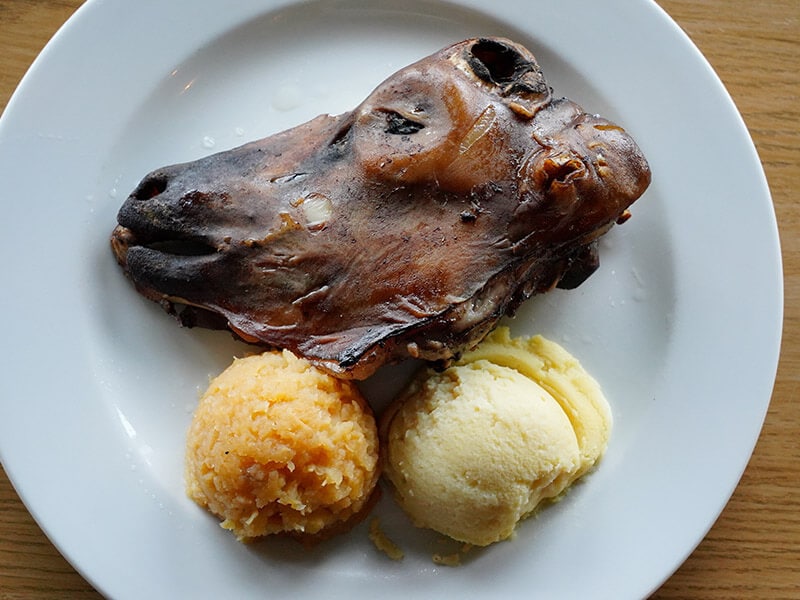
Like most cultural cuisines, Iceland owns some strange dishes. One of them is Svid – boiled or smoked sheep heads, a well-known specialty from Norway. Svid is also smoked in the Tadreykt method, like Hangikjot, and is usually served in a half-cut.
There is a rumor that eating the ears of Svid is taboo since the eater can be accused of thief sins if they remove the sheep’s owner marks.
Also, eaters should break the little bone underneath the tongue. Otherwise, the family’s baby, who couldn’t speak yet, will remain silent for the rest of its life. In contrast, the eyeball and the cheek meats are safe to eat and are the best parts considered by the Icelanders.
Check out how Svid is served in an Icelandic restaurant.
10. Hrutspungar/Hrútspungar – Pickled Ram Testicles
As mentioned above, the Little Ice Age pushed the Icelanders into eating every part of the cattle, hence the bearing of Hrutspungar. It’s ram testicles pressed and preserved in whey.
In Icelandic culture, Hrutspungar pairs with Svid, Rugbraud, and other traditional foods in the mid-winter festival, like a buffet. Experiencing Hrustpungar is like a roller coaster. The appeal is good until you know what’s in it, but you still get pulled in again by the delicious taste.
11. Plokkfiskur – Fish Stew
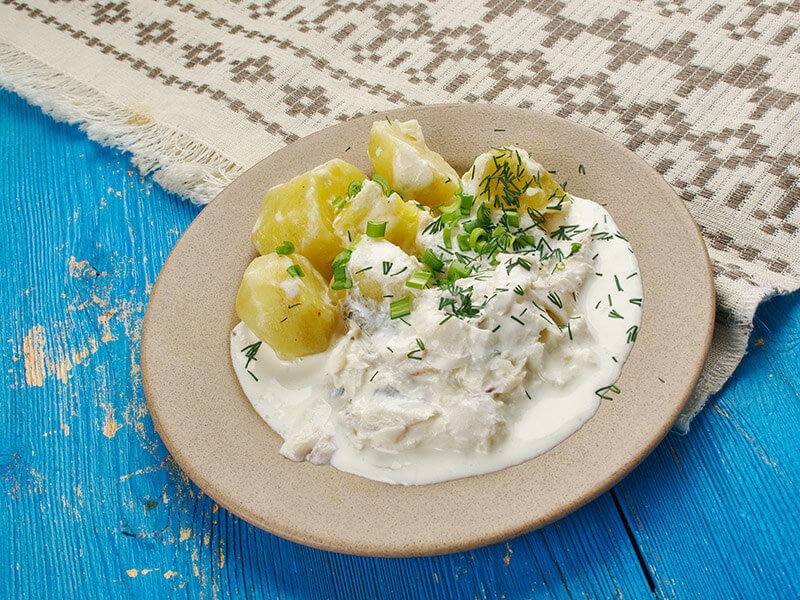
Every Nordic region has its own fish stew. However, Plokkfiskur, Icelandic fish stew, is perhaps the best version. The Icelanders learned how to make this appetizing dish from the Norwegian. It’s mostly a combination of leftovers and whitefish.
Nowadays, Plokkfiskur mostly appears as a side dish with a slice of Rugbraud to mop up the white sauce. Almost every Icelandic family creates its own recipes, some even have bacon, but chopped whitefish and potatoes are must-have ingredients.
12. Humar – Lobster or Langoustine
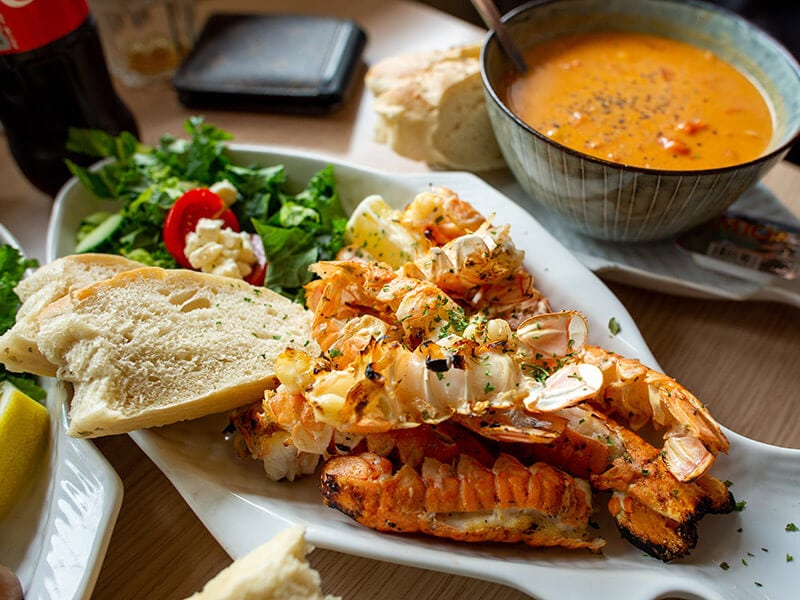
In Iceland, people call lobster “humar”. It is a smaller variety of lobster or langoustine, and people mostly eat its tail flesh. Baking, grilling, and stewing all work well with humar, but the most famous dish is Humarsupa – lobster soup.
You can easily find prepared humar in any supermarket around Iceland. However, the locals believed that Hofn and Reykjavik own the best humar serving restaurants.
13. Hardfiskur/Harðfiskur – Dried Fish Jerky
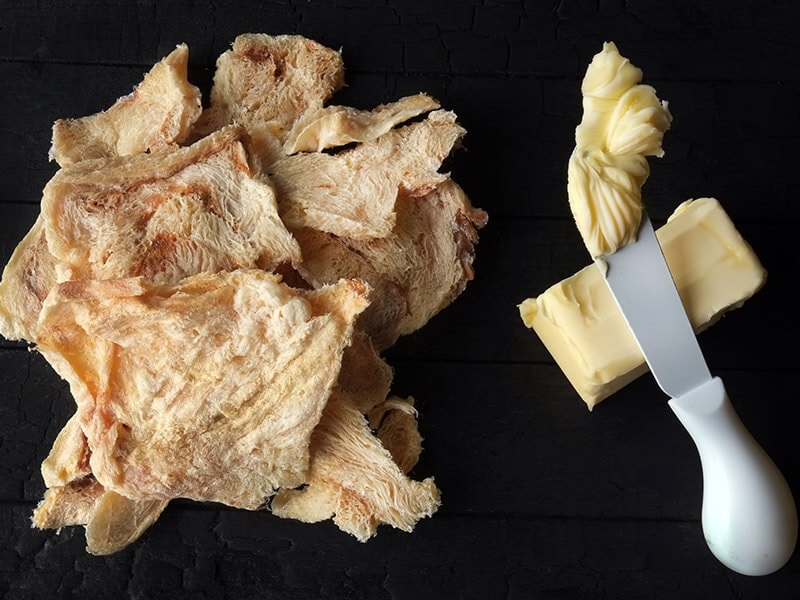
The first informative letter about Hardfiskur was around the 14th century. However, the locals believed their famous dried fish had followed the culture since the first settlements.
Due to the lack of supplements, Hardfiskur used to be Icelandic people’s favorite dishes for the main meals, thanks to its long-term storage. Nowadays, Hardfiskur is a famous seafood snack made of cod with chilled butter.
However, Hardfiskur might not be the choice for picky eaters due to its smell. Even some locals can’t stand nearby someone eating it. But it is worth the try if you want to dive into traditional Icelandic cuisine.
14. Hakarl/Hákarl – Fermented Shark
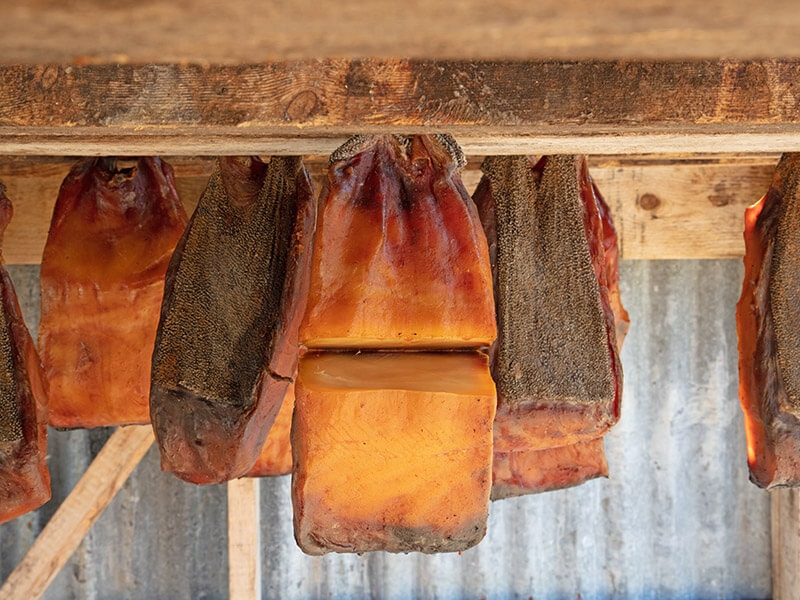
Hakarl isn’t a delicious food in general meaning. But it’s an essential part of Icelandic cuisine that you should try at least once when you get there. However, be cautious with the smell since even some locals are more afraid of it than the taste.
Hakarl mostly uses Greenland sharks. Though the meat is poisonous, it’s safe to eat after a delicate fermenting process for 4 to 5 months. Nowadays, Hakarl is often served as an alcohol bait with butter.
15. Hval – Whale Meats
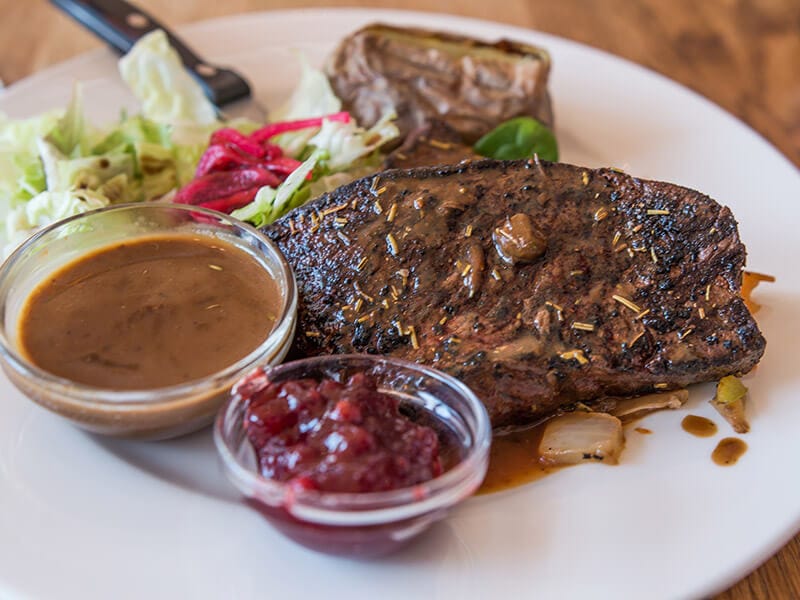
At the bottom of the seafood category, whale meat is a controversial food in Iceland. But still, you can find some restaurants that serve dishes if you want to try them out. The locals’ favorite one is whale steak.
Whale hunting and commercialization for fuel and food have taken away thousands of whales each year from the 12th to 19th centuries until it was banned in 1989.
The commercial was opened again in 2006 with multiple monitoring rules and only allowed on fin and minke whales. Though it may rely on the humanity of each person, those who tried whale meat claim that it’s the best meat they’ve ever eaten.
16. Skyr – Yogurt
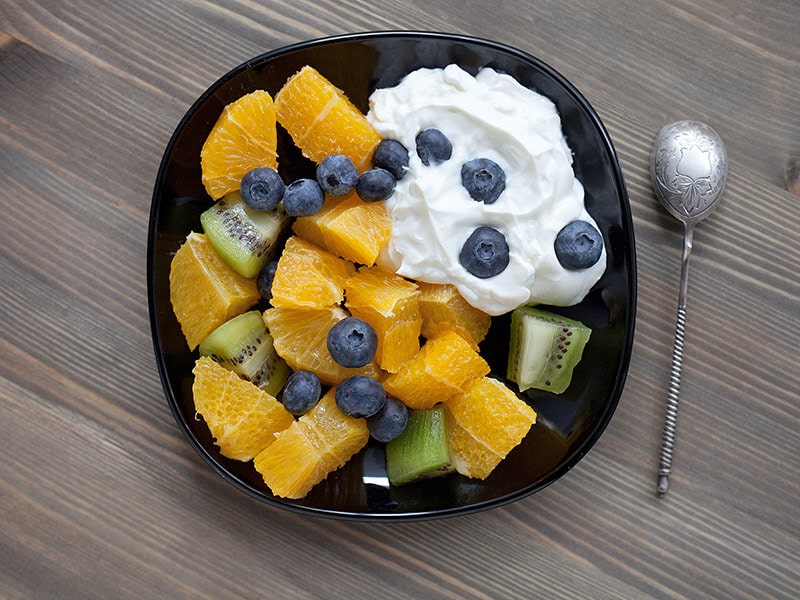
Besides Greek yogurt, Skyr is also a popular yogurt variety in Europe and other countries. You can find it at your local grocery store right now! Nowadays, Skyr appears in numerous flavors and participates in many Icelandic meals.
However, Skyr is actually a soft cheese of Iceland. The locals believed that Skyr used to be Norway cheese, then it came to and only survived in Iceland. They usually used the leftover whey from Skyr for storing meat in the old days.
17. Hrisgrjonagrautur/Hrísgrjónagrautur – Rice Pudding
Like other Nordic regions, Iceland has its own rice pudding. However, the most famous one is topped with ground sugar and cinnamon, usually served at the end of the year. People also call it Yule pudding beside the usual name Hrisgrjonagrautur.
This Icelandic dessert is often a combination of leftover rice or bread with sweetened milk. Sometimes the Icelanders also substitute sugar with salt to create a lunch meal.
18. Brunadar Kartofler/Brúnaðar Kartöflur – Caramelized Potatoes
Another Icelandic Christmas treat is Brunadar Kartofler, a sweet side dish often served with fried meat or roasted poultry.
Furthermore, this sweet is also an influence of the Danish during the 19th century. But most Icelandic families have their own way of making Brunadar Kartofler. A local tip for this dish is to boil the potatoes first, then peel them before caramelizing them.
This will help the potatoes to absorb the caramel better. You can either serve Brunadar Kartofler warm or chilled, but I guess you’ll want to have a warmed dish for Christmas eve.
19. Lakkris/Lakkrís – Licorice Chocolate
You may be surprised to know how much Icelanders love sweets. Go to any candy store or the candy stalls in the supermarket, and you’ll find various candies here.
They also especially love licorice. Licorice is among the most used spices in Iceland. And you can easily find this flavor in ice cream, alcohol, or yogurt. However, Icelanders’ favorite one is a salty licorice candy covered in dark chocolate: Lakkris.
20. Ponnukokur/Pönnukökur – Pancake
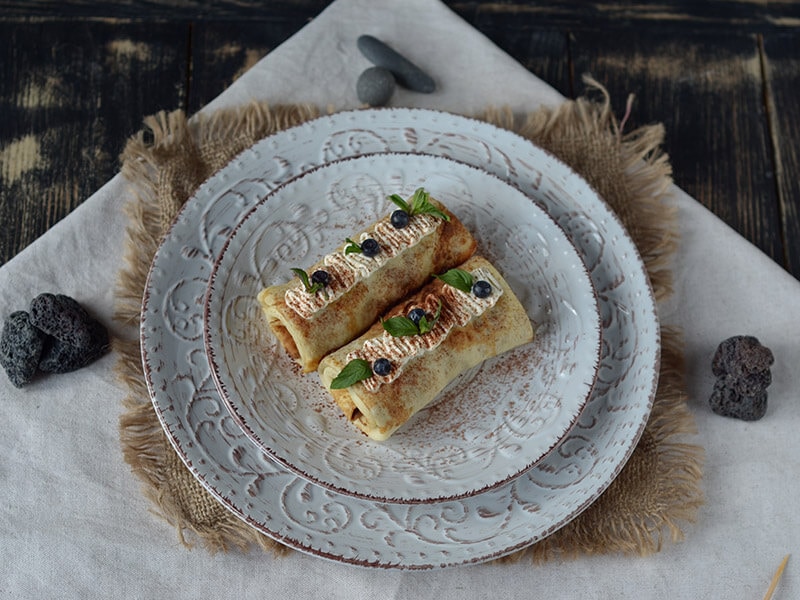
Ponnukokur is among the best versions worldwide. You will notice that Ponnukokur is larger yet thinner and less dense than the familiar American pancakes.
You often meet this treat with Skyr in any classic Icelandic breakfast meal. However, you can eat Ponnukokur throughout the day, depending on your chosen fillings. Stuff it with eggs for lunch or jam and whipped cream for desserts. The options are endless.
In addition, most Icelandic families usually have a pancake pan with a heavy bottom. The exciting thing is they never wash it, even with water, and hand it down for generations!
21. Bragdarefur/Bragðarefur – Ice Cream
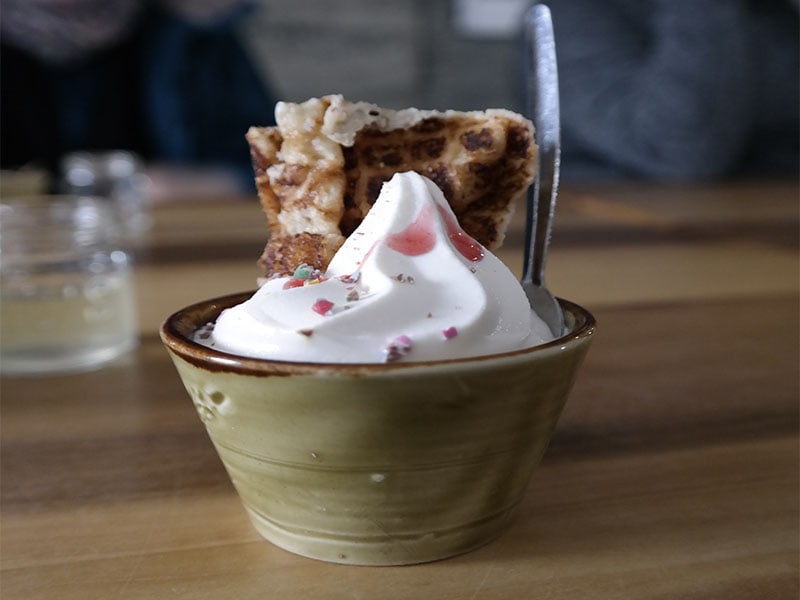
As mentioned above, Icelanders are heavy sweet lovers. So it’s no strange that they produce one of the superb ice cream varieties. You can easily find an Icelander heading to an ice cream store in the middle of a snowstorm.
Ice cream stores and stalls are also available throughout the region. Their favorite way to serve ice cream is Bragdarefur – ice cream glazed with caramel or chocolate and topped with fruits or nuts.
22. Opal – Licorice Vodka Shot
As mentioned above, you can find the licorice flavor in multiple sweets and drinks, including vodka. Opal is the most famous and can be considered the representative of Icelandic licorice vodka.
It’s also efficient to fight the cold in Iceland. And there’s a saying among the Icelanders that right after the children pass over the licorice candy habits, they’ll look for Opal like an instinct.
However, many locals also describe its taste as like cough syrup, so it might not be everyone’s favorite drink after all.
23. Reyka – Vodka On The Rock
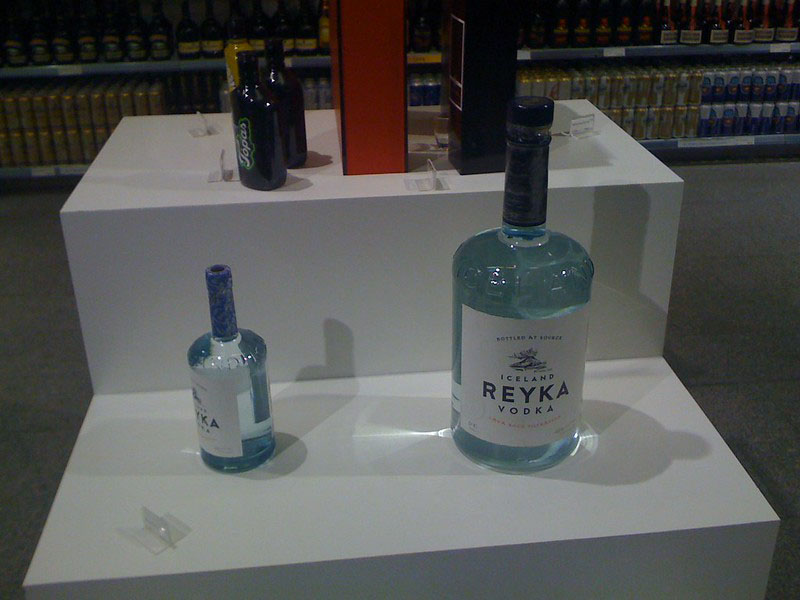
Reyka is another Icelandic alcohol drink you can now shop in the supermarket or online market. ‘Reyka’ is actually a brand of Icelandic vodka commercialized in 2005, but it now takes a staple place in the folks’ hearts.
Won the Vodka Trophy award of International Wine and Spirit Competition in 2011, ‘Reyka’ is a craft-made vodka that uses wheat and barley to distillate, sometimes alternated with European imported potatoes.
What made the fame of this vodka is the combination with lava field water during the distillation process, as well as a filter of volcanic rocks to increase the purity.
24. Brennivin – Spirit Alcohol
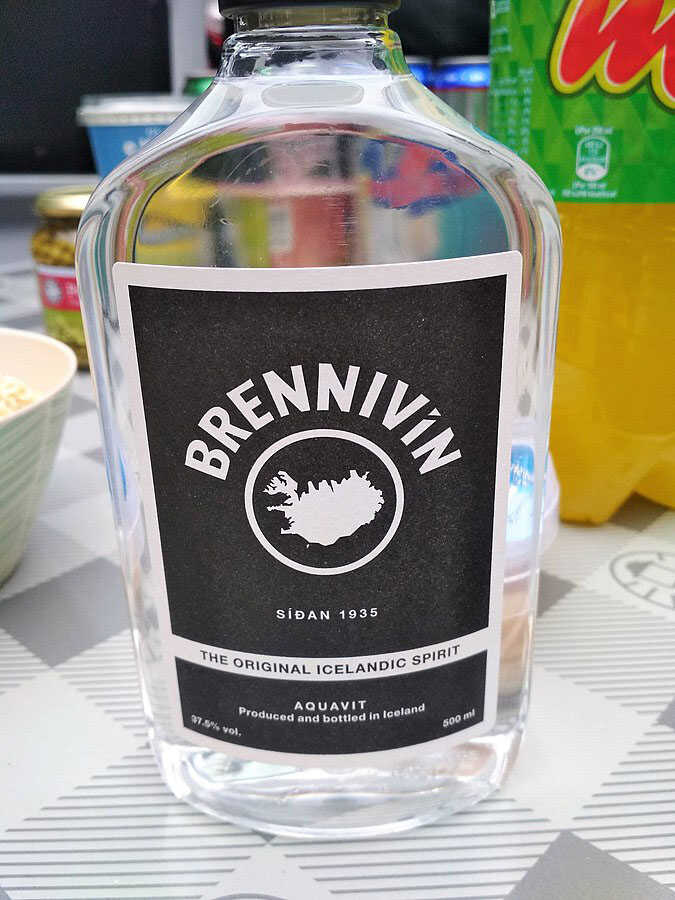
Photo Credit: Brennevin 500ml bottle by Alexander Grebenkov is licensed under CC BY 3.0
Last but not least, Brennivin isn’t a food but definitely should be added to your list – a famous Icelandic distilled alcohol. There’s a long historical story behind this marvelous alcohol, but it was believed to have first developed in the 13th century.
The taste of Brennivin included a touch of rye bread flavor and a pleasant fresh aroma of caraway. However, it contains 40% ABV (80 proof), making it famous as “The Black Death of Iceland”.
No More Hesitation About Icelandic Cuisine
I’m positive that you’ve now had your favorite Icelandic dishes. Let’s gather them and make a bucket list for traveling to this beautiful and magical country next time.
Do you notice any particular dish from Iceland that I’ve missed on the list? What about your experiences and travel tips in Iceland? Let me and other readers know in the comment section.
Also, if you found this article helpful, please share it with your friend who also loves Iceland or is going to take a trip to this beautiful island country, so they’ll have the best culinary options.
Now, what are you waiting for? There’s definitely more mysterious deliciousness hiding in Iceland, waiting for you to come and enjoy.
